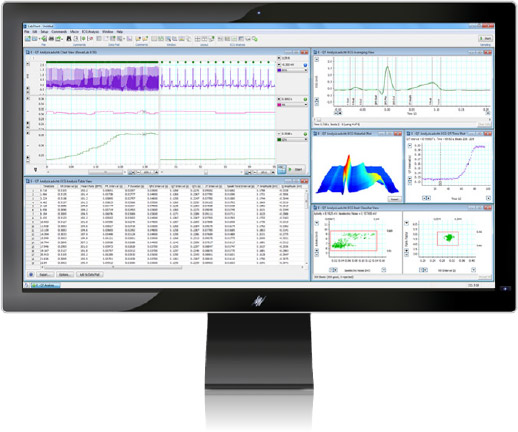In this webinar, Dr. Thao Nguyen discusses the exciting discoveries that her research team has made, debunks some common myths, and shares best-practices for data acquisition, analysis, and interpretation. Her in vivo studies of adult zebrafish cardiac electrophysiology rely on single-lead and multi-lead surface ECG in live anesthetized adult zebrafish.
Key Topics:
- Describing the four major steps in recording in vivo surface ECG for adult zebrafish
- Defining single-lead vs dual-lead electrode positions
- Critiquing ECG recording quality
- Performing basic interpretation of adult zebrafish cardiac depolarization, repolarization, and heart rate variability from single-lead ECG
- Performing basic interpretation of adult zebrafish Einthoven triangle and cardiac axis from dual-lead ECG
- Diagnosing arrhythmias, conduction blocks, and drug effects/toxicities by distinguishing pathologic deviations from normal ECG patterns
Abstract:
Zebrafish is a popular high-throughput vertebrate model to study human cardiac electrophysiology, arrhythmias, and myopathies. One reason for this popularity is the purported striking similarities between zebrafish and human electrocardiograms (ECGs). While human ECG, discovered 120 years ago, remains a standard technique in routine clinical practice, establishing similar standards for routine adult zebrafish cardiac research faces unique challenges. Yet, in vivo surface ECG offers the single most practical, economical, if not unique, solution to study adult zebrafish in vivo cardiac electrophysiology and arrhythmias.
Additional resources:
Surface ECG with ADInstruments »
Using the ECG Analysis, HRV and Cardiac Axis tools »
LabChart for Cardiovascular Electrophysiology – Sending S1, S2 Pacing Signals to the Heart »
Building a better Bio Amp: Reduced Noise and New Filter Settings for ECG/EKG, EMG, EOG, and EEG recording. »
Macrophage – the new miracle cell? How white blood cells help maintain a healthy heart beat »
Research focus: In the eye of the Damselfish »
About the speaker:

Thao P. Nguyen, MD, PhD
Associate Professor of Medicine
The Cardiovascular Research Laboratory Department of Medicine, Division of Cardiology
David Geffen School of Medicine
Dr. Nguyen is a cardiologist-biophysicist and the Principal Investigator of an NIH-funded research laboratory. Her diverse portfolio of scientific expertise in the fields of neuroscience, cardiology, ion channelopathies, system biology, biophysics, and electrophysiology provides her with a unique research perspective for multidisciplinary research in cardiac arrhythmias.

ECG (EKG) Analysis Module for LabChart
The ECG (EKG) Analysis Module for LabChart automatically detects and reports PQRST onset, amplitude and intervals in real time, or after recording.
Contact us for more information.